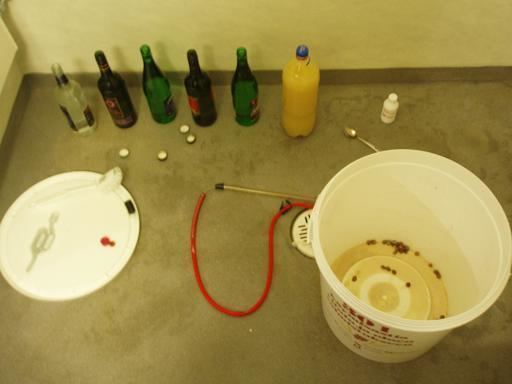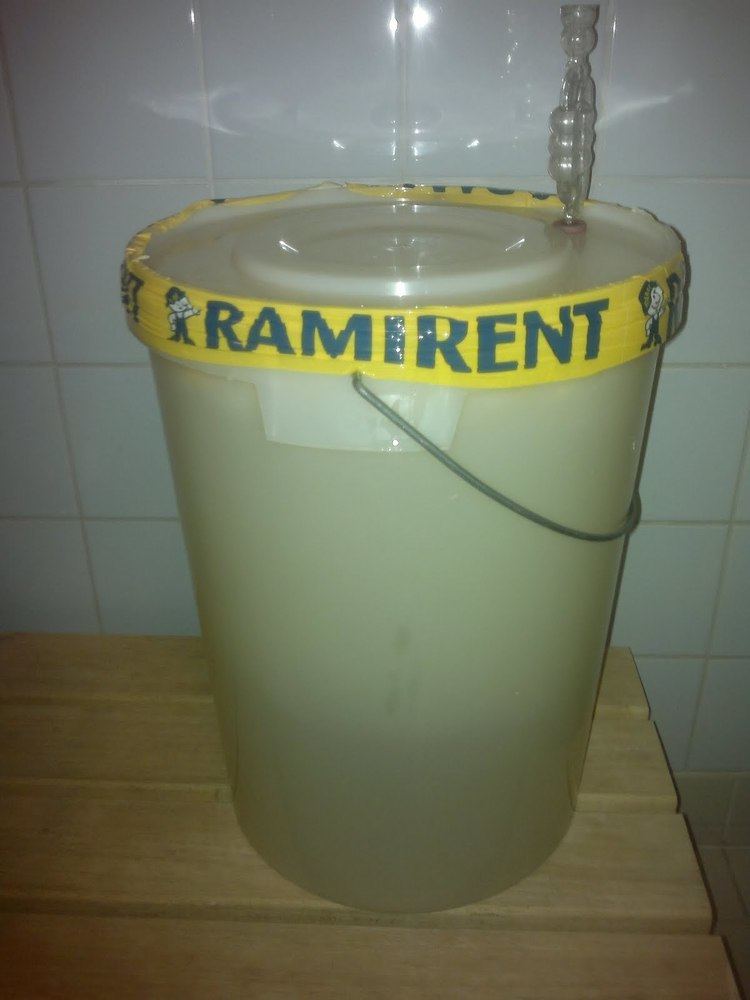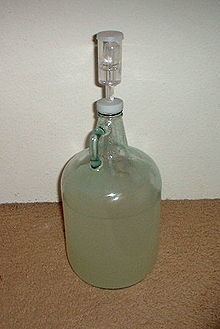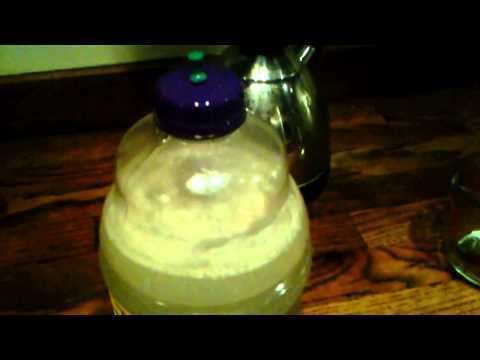 | ||
Similar | ||
Kilju ([ˈkilju]), is folksy name for a Finnish home-made alcoholic beverage, in English also known as sugar wine. It's mostly made from sugar, yeast, and water. Its alcohol content is usually 15–17% ABV.
Contents
Kiljun tekoa
Cultural aspects

Kilju is considered to be a low-quality beverage that is consumed mainly for the sake of its alcohol content. It is most often found at student parties and it has a strong association with the Finnish punk subculture, presumably because of its "Do It Yourself" and anti-authoritarian characteristics. In Finland, only licensed restaurants and the government monopoly, Alko, are permitted to sell alcoholic beverages that have an ABV content of more than 4.7%. Consequently, producing and drinking kilju may be considered a form of anti-authoritarian protest.

Due to its low cost and simple production process, kilju is mostly drunk by low-income people or heavy drinkers, such as students and alcoholics. The simple production process also enables underage persons to make it quite easily.
Production

Kilju can be produced by fermenting sugar, yeast, and water, but kilju made exclusively from sugar, yeast, and water is illegal in Finland. So, grain, potatoes, fruits or berries are used during fermentation to avoid legal problems and to flavor the drink. Oranges as well as lemons are a popular choice for this purpose.
The process is similar to that of homebrewing wine; it requires rigorous hygiene and filtering of the product. Properly made kilju is a clear, colorless liquid with no discernible taste other than that of ethanol. It can be refined into pontikka (Finnish moonshine) by means of distillation. It then resembles rum, as both are distilled from fermented sugar, although rum is made from unrefined sugarcane instead of refined, crystallized table sugar.
Kilju is often produced improperly by home brewers who allow contaminants to disrupt fermentation or do not adequately filter or rack the liquid, or do not use a fining agent. The latter mistakes result in yeast being suspended, causing the mixture to be cloudy rather than clear. The yeast is not harmful, but can provide an unpleasant taste and appearance.
When homebrewing grew in popularity during the economic depression that followed the Finnish banking crisis of the early 1990s, yeast strains known as "turbo yeast" were introduced to the market. These yeast strains enable a very rapid fermentation to full strength, in some cases in as little as three days (compared to several weeks required by traditional wine yeast strains). Such a short production time naturally does not allow the yeast to become sediment. The introduction of turbo yeast reinforced the public's view of kilju as an easy method of procuring cheap alcohol.
Consumption
Kilju is often mixed with juice or some other beverage to mask bad tastes caused by impurities.
Compared to wines, kilju most closely resembles Beaujolais nouveau, which is drunk after only a few weeks of fermentation. However, properly made kilju will not easily turn into vinegar. It is possible to enjoy kilju years after it was made, if it has been properly stored.
